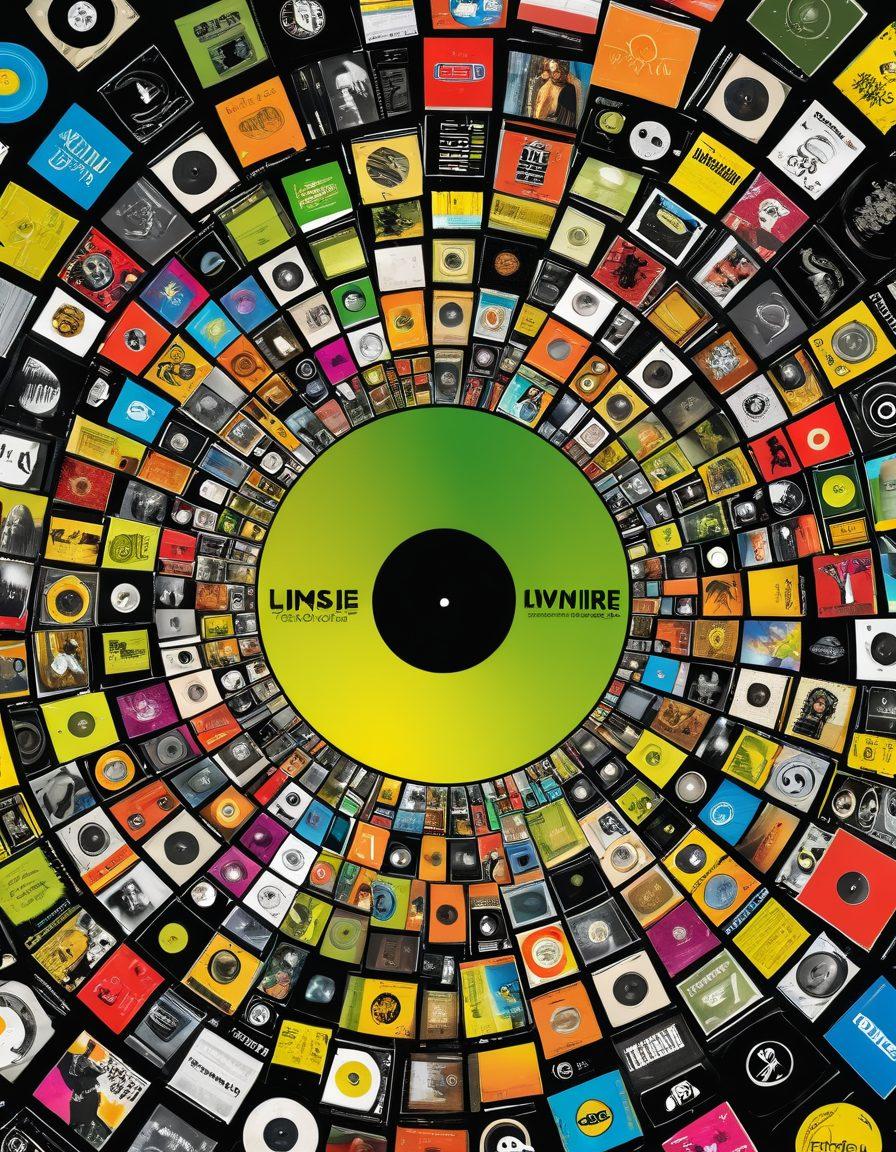Unleashing the Power of P2P: How LimeWire Revolutionized Music Distribution and Community Sharing
In the early 2000s, a revolutionary shift in how we accessed and shared music began with the rise of LimeWire. This small yet powerful application harnessed P2P sharing technology, allowing users to connect with one another directly for file transfer. It was a simple idea that upended the traditional music distribution model, propelling songs from band practice garages to global audiences within a matter of clicks. As we delve deeper into this era of LimeWire music, let us revisit how this platform sparked a community that thrived on collaboration and creativity, fundamentally changing the landscape of the music industry.
Think back to a time when you were in the throes of discovering new music. Remember the thrill of stumbling upon an underground band whose songs spoke to your soul? LimeWire made that possible on an unprecedented scale. With P2P sharing, users became both consumers and creators, swapping tracks and playlists as if they were passing notes in class. It’s no wonder LimeWire experienced such explosive growth—turning the music sharing experience from a solitary endeavor into a shared journey. As the saying goes, 'Music touches us emotionally, where words alone can't.' And through LimeWire, the world became one large concert filled with diverse voices.
The LimeWire community was more than just a collection of music enthusiasts; it represented a new era of content sharing and digital exchange that few had anticipated. For many users, LimeWire was their introduction to online communities that fostered not only exploration of music but also a creative outlet for user-generated content. From indie bands sharing their latest tracks to remix artists sampling songs for new audiences, this platform allowed for collaborative blogging of sorts—uniting fans and creators in a shared love for sound. How did this change the way we view music distribution? It blurred the lines between artist and audience, making everyone an integral part of the music ecosystem.
However, as with any technology that pushes boundaries, LimeWire’s disruptive impact on media distribution eventually prompted backlash from traditional industry players. Major record labels raised alarms over copyright infringement and the legality of digital downloads, leading to court cases that would define the future of online music sharing. Interestingly, while LimeWire faced challenges, the spirit of bandwidth sharing and open-source sharing nurtured a generation of artists who redefined their relationships with their audiences. Was it not a beautiful irony how a platform meant for illegal file sharing would end up inspiring legitimate streaming music services that are commonplace today?
As we reflect on the legacy of LimeWire, it’s essential to recognize the lessons it imparted on the music industry and our digital culture at large. It forced artists and labels to adapt to an ever-evolving online landscape and laid the foundation for many modern platforms we rely on today. From Spotify to SoundCloud, the ethos of the LimeWire community lives on in the way we engage with music as digital downloads proliferate and internet radio continues to flourish. Looking back, we must ask ourselves: how can we continue to honor the principles of P2P sharing while respecting the artists who create the sounds we love? The answers might just lie in the internet's unending capacity for innovation and collaboration.
Exploring the Community-Centric Revolution: LimeWire and the Future of File Transfer
In the early 2000s, a digital evolution was brewing, one that would change the landscape of music distribution forever. Enter LimeWire — a revolutionary peer-to-peer (P2P) file sharing platform that enabled users to share music, media, and even moments of their lives through digital downloads. Many remember LimeWire as the trusty hub for discovering new songs, but it was more than just a platform; it birthed a vibrant community committed to collaboration and content sharing. Now, let’s explore how LimeWire forged a path for future file transfer and how its community-centric model continues to inspire the digital world today.
At its peak, LimeWire transformed users into a collective of digital curators, where browsing for music wasn’t just a task, but an adventure. Ever found a hidden gem tucked away in an obscure folder, or stumbled upon an underground band that made your playlist? That feeling of discovery was due to a unique bond fostered by the LimeWire community. It was not uncommon to see quotes like, "The best music is the one you haven't listened to yet," adorning forums and chat rooms. The platform wasn't just about downloading; it was about experiencing the joy of collaboration that the music community offered. How often do we find ourselves caught in the endless loop of mainstream hits?
LimeWire's open-source sharing philosophy laid the groundwork for innovative methods of media distribution. By allowing independent artists and enthusiasts to upload their own tracks and downloadable content, LimeWire effectively short-circuited traditional barriers to entry in the music industry. As a result, many artists gained initial exposure and a following through the strong network of users actively participating in music sharing. The questions that beg to be asked are: how did this influence the way we perceive and consume music today? And in what ways can we emulate LimeWire's model in our content-sharing practices?
The advent of streaming music and online radio has shifted our methods of accessing music, but the ethos of peer-to-peer sharing remains alive and well. Rival platforms have emerged, but the spirit of community that LimeWire fostered can hardly be replicated. People continue to seek out platforms where they can not only listen but engage, chat, and collaborate. It begs the thought – what if the next big trend in digital media takes a cue from LimeWire’s community-driven success? Just as social blogging has transformed written content, perhaps collaborative blogging could reshape the future of music and content depending on the goodwill of its digital citizens.
Ultimately, the memory of LimeWire shines a light on the potential of user-generated content. As a model for community engagement, it stands as a reminder of the power of connection in our increasingly digital lives. Whether enhancing bandwidth sharing or pursuing a more accessible form of media distribution, LimeWire has shown us one undeniable truth: when we come together to share our creativity, we unlock possibilities for innovation that can propel entire communities forward. So, whether you're a traditional blogger, an independent artist, or a social media influencer, consider how you can tap into that revolutionary spirit and harness the power of P2P sharing for your own creative journey.
From Downloads to Discoveries: How LimeWire Empowered Users in Digital Media Exchange
In the whirlwind of the digital age, it's astounding how technology has shifted how we find and share music. Remember the days when we had our favorite tracks just a click away? LimeWire wasn't just another file transfer tool; it was a gateway into the vibrant world of digital media exchange. This platform transformed music distribution and reshaped the LimeWire community into a cultural phenomenon that brought millions together to discover new tunes, artists, and genres. But have you ever wondered just how significant such a simple concept like P2P sharing could be?
LimeWire's peer-to-peer file sharing set the stage for a music revolution. It wasn't merely about downloading; it was a treasure trove of content sharing, where music lovers could access a limitless library with just a few clicks. Imagine that moment of anticipation when you would find a rare track from your favorite band or stumble upon an emerging indie artist. LimeWire empowered its users, performers, and fans alike, creating an online community that thrived on collaboration and creativity, redefining digital downloads experiences in a way that many of us had never thought possible.
With every search, LimeWire turned the concept of music distribution on its head. The power of user-generated content became apparent; no longer were users just passive listeners. They became active contributors, uploading their own playlists and sharing their musical journeys. This made LimeWire more than just a platform for streaming music; it became a vibrant space for social blogging and collaborative blogging. The conversations and recommendations that stemmed from shared files brought people closer, tightening the bonds of the LimeWire community.
Let's not forget the ethics of it all. P2P sharing sparked debates about copyright and fair use, igniting discussions that continue today. Yet, it also propelled artists into the limelight in ways that traditional media distribution simply couldn't achieve. It allowed unheard voices to surface and gain traction through sheer grassroots effort. Perhaps you discovered your favorite band through LimeWire? That delightful accidental download, that juxtaposition under the veil of Bandwidth sharing—those moments opened doors to musical pathways we may never have explored otherwise.
In conclusion, while legal and ethical challenges have since emerged in the world of digital media, LimeWire's legacy endures. It taught us about the power of connection, the thrill of discovery, and how an open-source sharing approach could unite a diverse tapestry of listeners, musicians, and dreamers. So, the next time you pop on your favorite internet radio station or stream a new album, take a moment to reflect on how far we’ve come from those days of LimeWire. What’s your story? How did LimeWire impact your musical journey?


